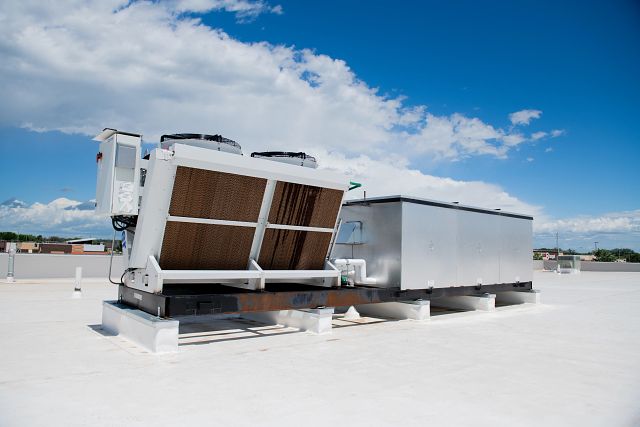Stay Ahead of the Heat: Industrial and Commercial Refrigeration System Cooling

A walk-in cooler turns into an oasis during the summer months. While this may bring you relief, it adds stress to your commercial or industrial refrigeration system. The efficiency of any refrigeration system drops as the ambient temperature increases. Pressure within the system also increases, putting strain on the entire system. For areas with warmer climates, this happens for a longer period of time during the year. There are many ways to mitigate stress and heat in your system, but which one works best for your application?
Condenser Cooling Methods
Water-Cooled
Air-Cooled
Cascade Systems
Evaporative Cooling
Adiabatic Cooling
Charge Saver

A charge saver is refrigeration equipment specifically designed for CO2 systems. It is an auxiliary condensing unit that helps prevent an unwanted partial or complete loss of refrigerant during downtime caused by a power outage, an emergency shutdown, or maintenance. During downtime, the system cannot cool itself, thereby increasing its overall temperature. As the temperature in the system increases, so does the pressure. Powered by a generator, the charge saver automatically starts to cool the CO2 during downtime and makes the flash tank the lowest pressure point in the system. This will cause the CO2 to migrate to the flash tank, which can hold a large volume of refrigerant. This also keeps the flash tank pressure below the design pressure, preventing the charge from venting through safety relief valves. Charge savers are not only for new systems, but they can also be retrofitted to existing CO2 systems.
Find Your Method for Peak Efficiency
The type of condenser cooling required and the use of a charge saver vary depending on the refrigeration system’s application and location. Some methods, like adiabatic cooling, provide greater flexibility in their application. To get more information on condensers, charge savers, or what is right for your system, visit our products page or contact a sales rep
